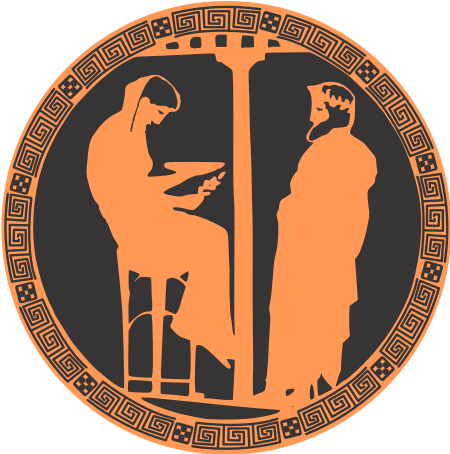Warning
You are looking at the page for a historic release! With the release of PYTHIA 8.3, there should be no reason for anyone to download and run any version of PYTHIA 8.1. These pages are, however, kept online in the case an old version is needed to reproduce a historic result.
PYTHIA 8.1
With the release of PYTHIA 8.1, this new C++ version series took over from the older Fortran 77-based PYTHIA 6.4 one as the new standard. It was strongly recommended to move to PYTHIA 8.1 for LHC studies, although for practical reasons the transition was a slow one in the experimental community.
This initial PYTHIA 8.1 release is focussed towards LHC and Tevatron applications, i.e. high-energy p p and pbar p collisions. Also e+ e- and mu+ mu- annihilation processes may be simulated, but not e.g. e p, gamma p or gamma gamma collisions. This is the major exception where PYTHIA 6.4 still has more to offer. For the rest PYTHIA 8.1 offers many features not found in PYTHIA 6.4, which should make a transition worthwhile.
The release of PYTHIA 8.2 in October 2014 means that PYTHIA 8.1 will not be developed any further. Almost complete backwards compatibility is maintained, so the transition to 8.2 should be easy.
Installation
To get going with the program, do the following (on a Linux or Mac OS X system):
- Download the file pythia8186.tgz to a suitable location.
- Unzip and expand it with
tar xvfz pythia8186.tgz. - Move to the thus created
pythia8186directory. - Read the
READMEfile in it for installation instructions, and apply them.
(If you are not going to link any external libraries, or have any other special demands, you only need to typemake.) - Move to the
examplessubdirectory and read theREADMEfile there for instructions how to do some test runs.
(Again, if you do not link to external libraries, you only need to typemake mainNNfollowed by./mainNN.exe > out, whereNNis a two-digit number in the range 01 - 28.)
Documentation
All necessary information how to run the program is available in subdirectories of the pythia8186 directory you unpacked above, and copies of them are also linked here.
-
Study A Brief Introduction to PYTHIA 8.1, available in
pythia8186/htmldoc/pythia8100.pdf, for an overview.
Note that, in some minor respects, version 8.186 deviates from the 8.100 description presented there. -
The current online HTML manual can be accessed if you open the
pythia8186/htmldoc/Welcome.htmlfile in a web browser. -
Alternatively, the current online PHP manual contains the same text, but additionally offers a simple graphical-user-interface, with which you can save a file with the settings you want to use in a run. For security reasons a direct link on this page has been removed.
-
The Update History forms an integral part of the manual.
-
A summary of the tau decay treatment has been presented in arXiv:1211.6730 [hep-ph].
In addition, the complete PYTHIA 6.4 Physics and Manual is still relevant for most of the physics in 8.1. Also the manual parts may be helpful since many 8.1 settings have exact counterparts in 6.4, but finding them may be too time-consuming for the normal user.
Tutorials
-
PYTHIA 8 Worksheet,
further updated, with new exercises on CKKW-L merging and on Higgs production and decay, and extended installation instructions. Developed for PYTHIA 8.183, but valid also for other recent versions.
For the merging study the option exists to download larger LHE files than come with the standard PYTHIA distribution:
wp_tree_0.lhe.gz
wp_tree_1.lhe.gz
wp_tree_2.lhe.gz
wp_tree_3.lhe.gz
wp_tree_4.lhe.gz -
MC4BSM-2012 Tutorial: PYTHIA 8,
a variant of the normal worksheet intended for beyond-the-standard-model studies, used at the MC4BSM Workshop, Cornell, 22 - 24 March 2012. Requires LHE input files generated by another program. -
PYTHIA 8 Merging Tutorial,
a variant of the normal worksheet specifically intended for merging studies at schools, for PYTHIA 8.160, with start-up instructions and more specific information on how to merge event samples with different jet multiplicities. Used at the Terascale Monte Carlo School, DESY, 12 - 16 March 2012, but not specific to this school. -
PYTHIA 8 Worksheet,
further updated from the worksheets used at previous schools, for PYTHIA 8.160, with start-up instructions and a few examples of (semi-)realistic analyses. -
PYTHIA 8 Worksheet,
further updated from the worksheets used at previous schools, for PYTHIA 8.153, with start-up instructions and a few examples of (semi-)realistic analyses. -
PYTHIA 8.1 Introduction and Tutorial
presented at the Terascale Monte Carlo School, DESY, 21 - 24 April 2008, also as a video -
PYTHIA 8 Worksheet,
prepared for the 2008 Terascale Monte Carlo School at DESY, and therefore partly specific to the file structure at DESY,
but contains start-up instructions and a few examples of (semi-)realistic analyses. -
PYTHIA 8.1 Introduction and Tutorial
a collection of slides used for presentations at ATLAS, CMS, LHCb and ALICE generator meetings.
Related programs
- VINCIA is a flexible dipole-antenna shower that can be installed as a plugin, providing an alternative to the normal PYTHIA showering. As of yet the main application is for final-state radiation in resonance decays, such as the Z0.
Earlier versions
Normally there should be no reason now to install an older, obsolete version.
However, for backwards checks, this might be required, so the previous ones can be found on the downloads page.
Note that version 8.170 is not recommended owing to unfortunate bug
Working materiel
In this section is collected some of the internal documents used in preparing the code.
The updates of branching ratios to the 2012 Review of Particle Physics for
